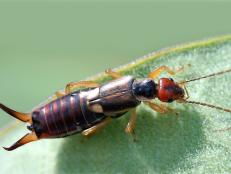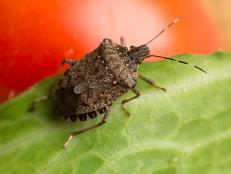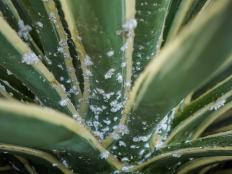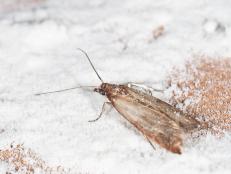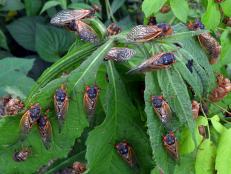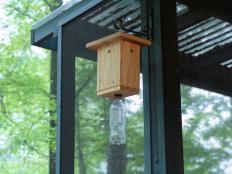House Centipede
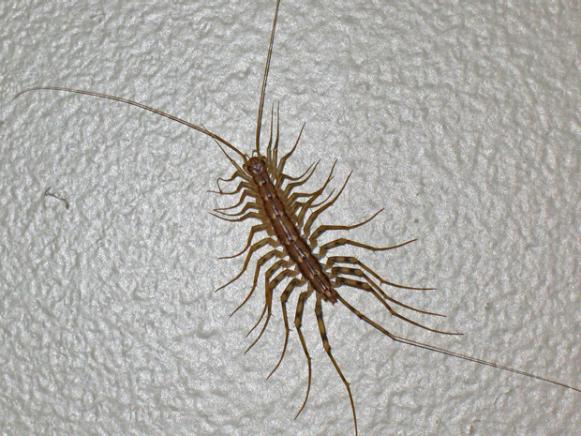
The mere sight of this leggy creature darting across the ceiling or hanging out in the bathtub is usually enough to produce a few shrieks from the squeamish among us, but the house centipede (Scutigera coleoptrata) is a benign creature that poses no harm to people, pets or property. The critters that should be afraid are other insects, larvae and spiders – the house centipede's food source.
It doesn't have 100 legs, as its name suggests, but the house centipede makes good with 15 pairs — one pair per body segment (millipedes have two pairs per segment) — moving at high speed on walls, floors and ceilings. Unlike the outdoor varieties, which have rather short legs, the house centipede's long legs, antennae and extra-long pair of rear legs can make its 1- to 1-1/2-inch body seem almost four inches long. A very agile creature, the house centipede can run fast and stop quickly.
Centipedes prefer damp, dark places. Outside, they're found in wood piles, under leaf litter, boards — wherever moisture accumulates. Indoors, they're usually seen at night, typically in closets, in cracks and damp areas in basements. In lieu of moisture, they also seem to gravitate toward areas of high humidity. They don't enter a house through the bathroom plumbing; instead they gain access via cracks and openings in the foundation, walls and windows.
House centipedes are capable of completing their life cycle indoors. Females often live for several years. If you see a lot of house centipedes, there is likely a resident population of other insects that they're feeding on. Typical prey includes carpet beetle larvae, silverfish, cockroaches and other small arthropods. The centipede paralyzes its victims with their "poison jaws."
The house centipede is capable of biting when disturbed but its venom is considered too weak to pose a problem for humans. The pain of the bite is considered equivalent to that of a wasp sting and poses a problem only for the highly allergic. Young centipedes can't break through human skin.
Although they're considered beneficial in that they feed on other insects and spiders, house centipedes generally evoke the fear factor in many homeowners. To reduce the likelihood that you'll play host to house centipedes, eliminate other insect populations and reduce the moisture in your home. Seal cracks in the foundation wall and around doors and windows. Outside, in a three-foot-wide perimeter around your home, remove any debris — especially wood but also leaf litter, grass clippings and rocks — that may be preventing moisture from evaporating. Provide ventilation to crawl spaces, eliminate moisture sources in the basement (run a dehumidifier if necessary) and remove other insect populations that would provide food for the centipedes.






